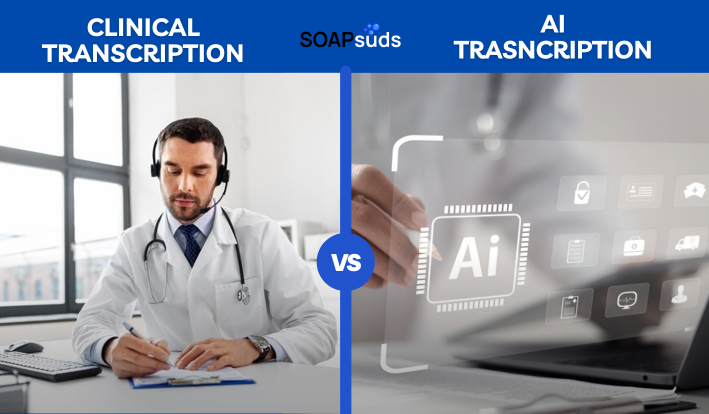The Impact of AI On Remote Medical Scribing and Telehealth
SOAPsuds team
Published: 1/24/2025
SOAPsuds team
Published: 1/24/2025

In recent years, speech recognition technology has made significant improvements in terms of performance,

Artificial Intelligence (AI) in medical diagnosis involves using computational techniques and machine learning models to...

Today, for the first time in recent history, most American clinicians are opting to...

Thinking about outsourcing medical transcription? Handling medical transcription in-house can be expensive and time-consuming.

Senior living providers face growing challenges in maintaining quality care while managing documentation, compliance

Struggling with long hours of medical charting? AI dictation tools like SOAPsuds can help you
Clinical Notes
SOAP notes
DAP notes
AI medical notes